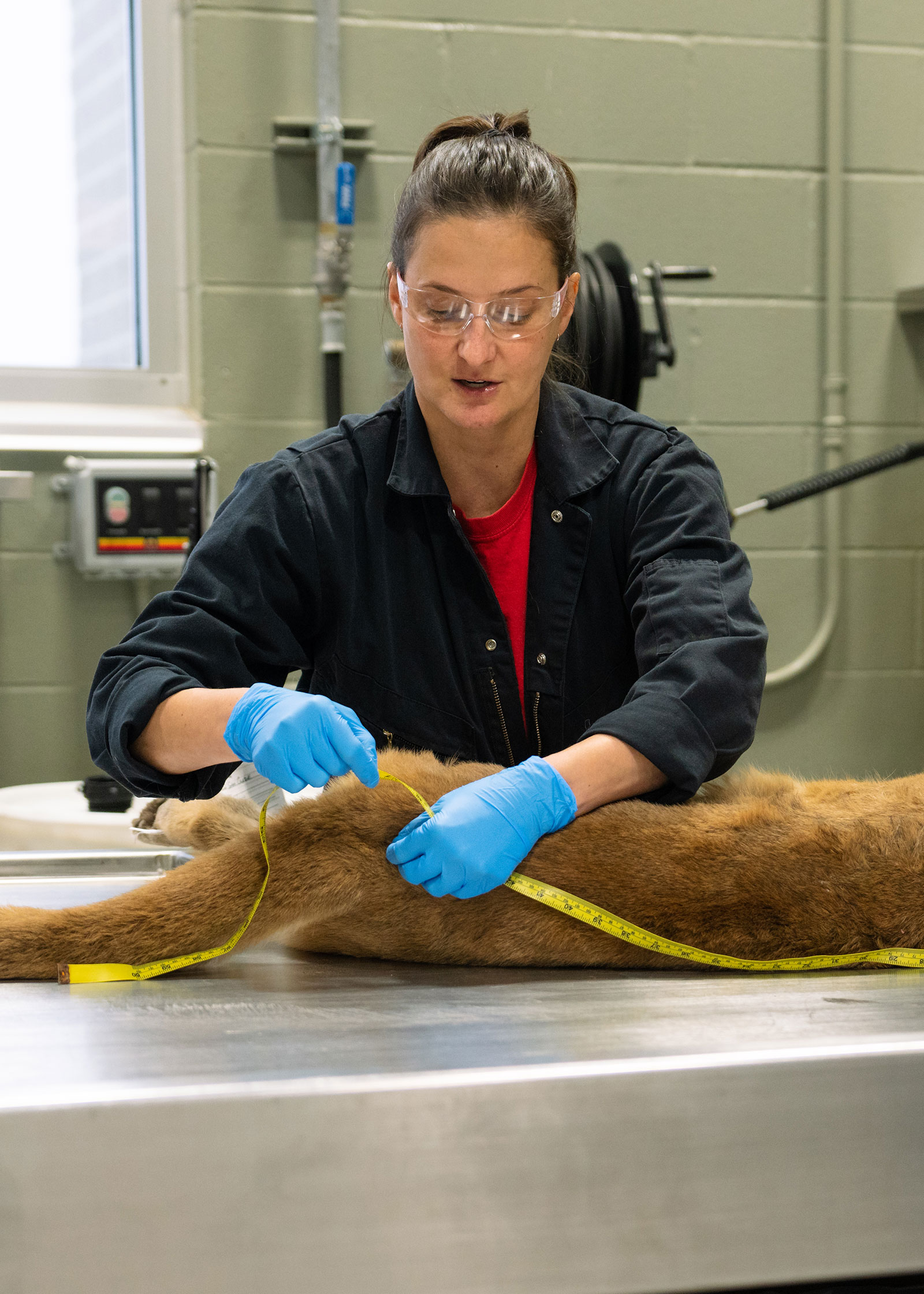Managing Wildlife Health
Ron Wilson

We get a whiff of the deer before we see them.
It's not a horrible smell, but you know there are dead animals nearby.
The aroma's source is two white-tailed does temporarily housed in a big plastic tub with their legs pointing skyward and a young buck lying horizontal on a metal table.
The deer, it is expected, died of epizootic hemorrhagic disease, but that won't be known for certain until necropsies (defined as autopsies on animals) are performed later this September day.
“We kind of have the beginnings of what I would describe as smoldering EHD,” said Dr.
Charlie Bahnson, North Dakota Game and Fish Department wildlife veterinarian, of the naturally occurring virus spread by a biting midge that is often fatal to white-tailed deer, and less commonly to mule deer, pronghorn and elk.
“For about three weeks now we've had a trickle of reports coming in of deer suspected of dying of EHD.
Our hope, of course, is that this one just kind of stays localized and stays low grade.
But, again, that's why we ask the public to let us know because we try to keep track and decide if there's any sort of response and management that needs to happen.”
Investigations into these dead animals and others take place in the Game and Fish Department's wildlife health lab in Bismarck.
And at this time of year, with more hunting boots on the ground across North Dakota's rural landscape, reports of dead or dying animals typically increase.
“For the system to work, we rely on the eyes and ears of people out on the landscape.
And when they see sick or dead wildlife, they'll call us, field staff, or often a warden in the area,” Bahnson said.

Not every animal that comes into the lab is dead. The facility is also used for wildlife management research projects for pheasants, turkeys and so on.
“And then we'll figure out what needs to happen next.
Does the animal need to be euthanized, or do we let nature takes its course? Does the carcass need to be brought in to do further investigation?”
And the size of the animal in question doesn't matter.
“The lab was designed to basically handle anything from a bull moose to something very small like, say, a bat,” Bahnson said.
A dead or sick moose euthanized in the field, for example, is loaded into a truck and backed into the lab upon arrival.
Bahnson said that it's understood that wildlife health is one component of landscape health and human health.
It's all interrelated, tied together.
“And when you have breakdowns in health, that tends to manifest itself in disease or mortality.
We're kind of at the end of that signal, so if we have sick or dead animals showing up, we're trying to figure out what that means about that overall breakdown in health.
Our aim is to help inform the Department in figuring out how we can ultimately work toward better resilience and long-term health to benefit our landscapes, our wildlife, our domestic animals and, most importantly, the people in North Dakota.”


